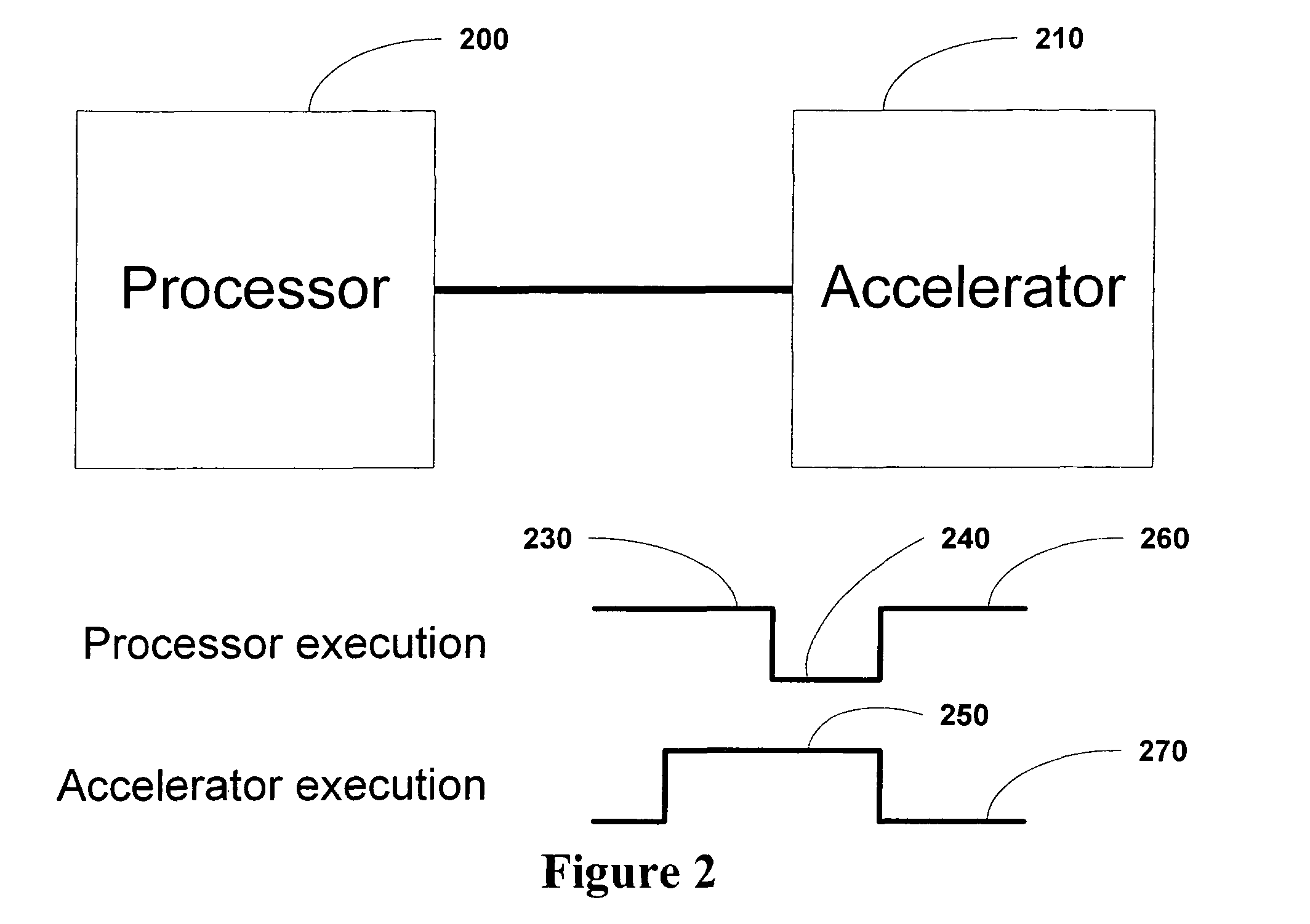Generating hardware accelerators and processor offloads
a technology of hardware accelerators and processors, applied in the direction of interprogram communication, program control, multi-programming arrangements, etc., can solve the problems of system or device functionality executed in software and executed in some general purpose processors or logics that are typically slower than others, and completely automated designs almost invariably have limitations and inefficiencies, and software writers typically have no concept of the underlying execution timing
- Summary
- Abstract
- Description
- Claims
- Application Information
AI Technical Summary
Problems solved by technology
Method used
Image
Examples
Embodiment Construction
[0091]This invention provides a means of creating a hardware offload and hardware acceleration from a software function. Exemplary embodiments of the invention provide some or all of the following features and characteristics, some of which may be optional: (1) generates a hardware offload from an untimed function definition, (2) allows asynchronous accelerators for use with single-threaded processors, (3) allows point-to-point connection of accelerators to processors, (4) allows the queuing of accelerator tasks, (5) automatically creates a test harness for testing the created hardware accelerator, and / or (6) automatically creates one or more test cases of the created hardware accelerator for use in an automatically created cycle-accurate test environment.
[0092]FIG. 11 provides a block diagram of an exemplary non-limiting embodiment of an aspect of the invention. This embodiment has been realized or implemented in an Field Programmable Gate Array (FPGA) using MicroBlaze processors t...
PUM
 Login to View More
Login to View More Abstract
Description
Claims
Application Information
 Login to View More
Login to View More - R&D
- Intellectual Property
- Life Sciences
- Materials
- Tech Scout
- Unparalleled Data Quality
- Higher Quality Content
- 60% Fewer Hallucinations
Browse by: Latest US Patents, China's latest patents, Technical Efficacy Thesaurus, Application Domain, Technology Topic, Popular Technical Reports.
© 2025 PatSnap. All rights reserved.Legal|Privacy policy|Modern Slavery Act Transparency Statement|Sitemap|About US| Contact US: help@patsnap.com



